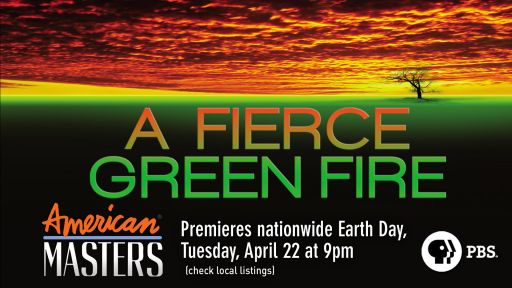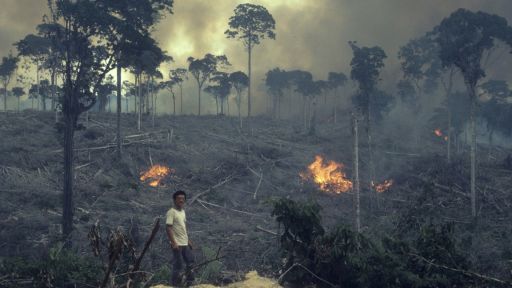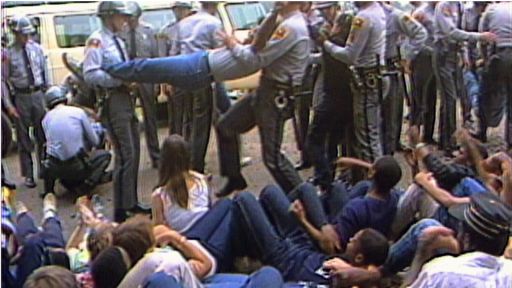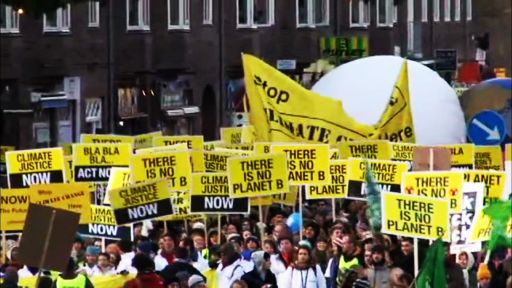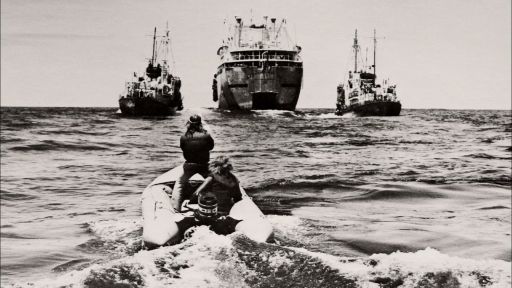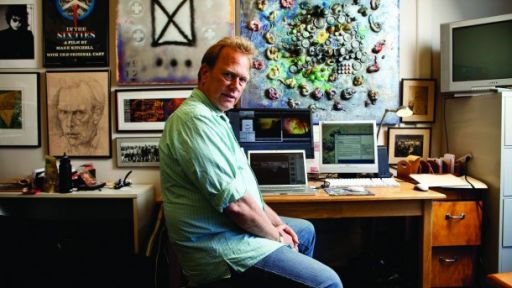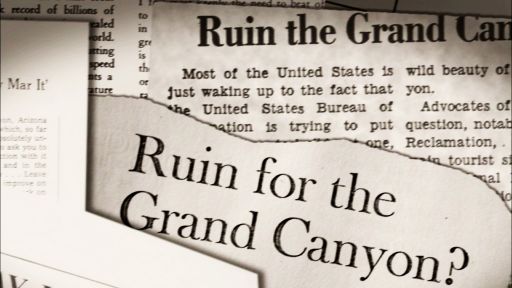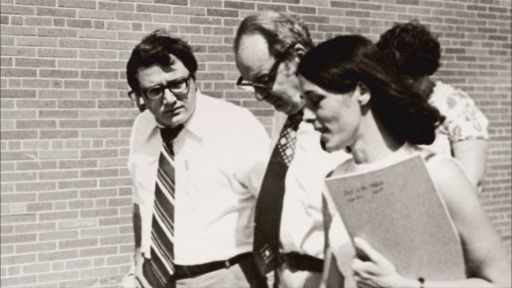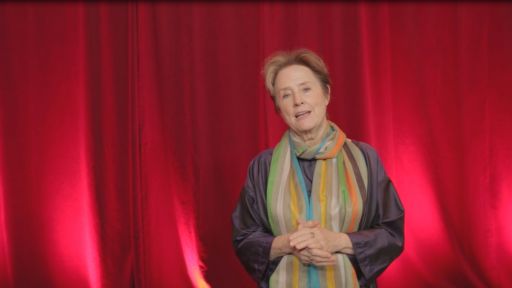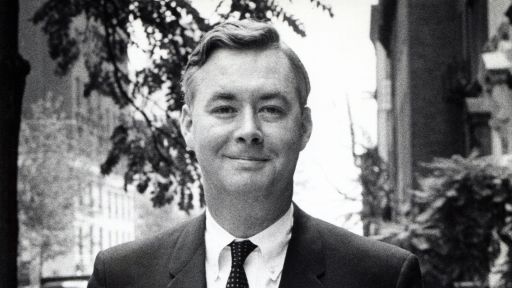This timeline of key moments in environmental history and the environmental movement is adapted from Tom Turner’s chronology for American Earth, an anthology edited by Bill McKibben. The timeline includes important early writing, the first conservation groups, disasters, legislation, community and non-profit activism, and more.
Early Environmental Writing and Advocacy
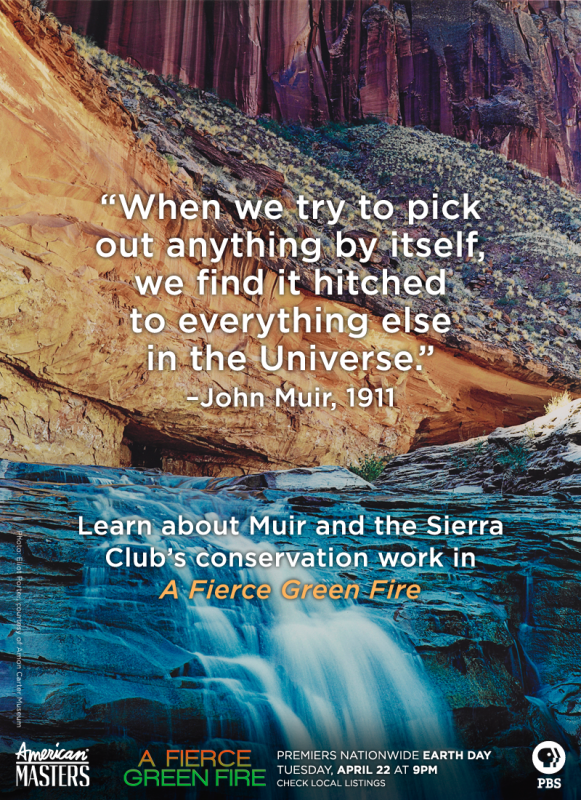
Seminal works that serve as milestones in environmentalism come from writers and naturalists from the mid-19th century to the mid-20th century.
1854 Henry David Thoreau’s Walden
1864 George Perkins Marsh’s Man and Nature
1872-1913 John Muir’s essays, articles and books about the Sierra Nevada
From the 1880s on, English romantics and reformers including John Ruskin, Octavia Hill and Edward Carpenter articulate ideas about saving nature and man from the Industrial Revolution. German foresters like Dietrich Brandis promulgate scientific conservation. Gifford Pinchot is the first head of the U.S. Forest Service (1899).
1949 Aldo Leopold’s A Sand County Almanac
The tile for the film “A Fierce Green Fire” comes from the pioneering ecologist’s essay, “Thinking Like a Mountain,” in which Leopold describes his experience as a young ranger shooting a wolf.
“We reached the old wolf in time to watch a fierce green fire dying in her eyes. I realized then and have known ever since that there was something new to me in those eyes, something known only to her and to the mountain. I was young then and full of trigger-itch; I thought that because fewer wolves meant more deer, that no wolves would mean hunters’ paradise. But after seeing the green fire die, I sensed that neither the wolf nor the mountain agreed with such a view.” — Aldo Leopold
The First National Parks
National parks are established first in the United States: Yellowstone (1872), Sequoia (1890) and Grand Canyon (1908).
The movement spreads to Australia and New Zealand (1879 and 1887), South Africa (Kruger National Park grows out of a game reserve established in 1898), India (Kaziranga grows out of a forest reserve from 1905) and Europe (Sweden establishes seven national parks in 1909.)
The First Conservation Groups
The first conservation groups are dedicated to saving wildlife and wild lands.
1886-1905 The National Audubon Society forms to save plume birds from ladies’ hatters
1887 The Boone & Crockett Club is set up to preserve “manly sport with rifles”
1892 The Sierra Club is established by John Muir and others to defend Yosemite National Park
1918 Save the Redwoods League begins buying the last old-growth redwood trees
1935 The Wilderness Society is started by Aldo Leopold and others to preserve wilderness; and the National Wildlife Federation brings together hunters and fishermen
1946 The Ecologists Union, later the Nature Conservancy, is started by scientists to acquire ecologically important reserves
1961 The World Wildlife Fund is founded by Sir Julian Huxley, Dutch and British royals
Key Dates in Environmental History
1962
The book Silent Spring by Rachel Carson warns of devastation that pesticides, particularly DDT, are wreaking on birds and other creatures. Carson is criticized by the chemical industry, but the book is a bestseller and has an immense impact worldwide.
1963
Congress passes the Clean Air Act (expanding it in 1970, 1977 and 1990), and ratifies the Limited Nuclear Test Ban Treaty, ending testing of nuclear weapons in the atmosphere, underwater, and in space.
1964
The Wilderness Act passes, setting aside 9.1 million acres to be preserved in perpetuity, “where man is a visitor but does not remain.” Congress will add national forest, national park and Bureau of Land Management (BLM) lands to the system, which will grow to 100 million acres.
1965
Scenic Hudson Preservation Conference—an alliance of local residents and national environmental groups—challenges a hydroelectric plant at Storm King Mountain in New York. The U.S. Court of Appeals rules that “aesthetic, conservational, or recreational” interests can establish standing to sue, a precedent that leads to growth of environmental litigation.
1966
The Sierra Club publishes ads opposing U.S. Bureau of Reclamation plans to build two dams inside the Grand Canyon. The IRS retaliates by suspending the tax deductibility of contributions to the club. Public opinion rallies strongly to saving the Grand Canyon. Stewart Udall, Secretary of the Interior and conservationist, has a change of heart. Congress first postpones the dams, then prohibits dams in the Grand Canyon and expands the national park. It is a turning point, the biggest victory yet for conservation.
1967
The Environmental Defense Fund is founded by scientists who begin litigation to ban the pesticide DDT. Concurrently, Yale Law grads seeking to set up “a law firm for the environment” combine with attorneys fighting Storm King hydroelectric plant, and the Natural Resources Defense Council takes shape. The Sierra Club Legal Defense Fund (later Earthjustice) is the third major group using lawsuits — from Storm King to Mineral King — to be formed during this time.
1968
The flowering of the conservation movement climaxes with the creation of North Cascades National Park, Redwood National Park, the Wild and Scenic Rivers System and the National Trails Bill — all signed into law on the same day. The Population Bomb becomes a bestseller, predicting famine in the wake of global overpopulation. The Whole Earth Catalog provides new tools, technology and thought to those looking for alternatives. Its guiding spirit is Buckminster Fuller, who becomes famous for a geodesic dome at Montreal Expo in 1967. He speaks of Spaceship Earth and the need to guide it, to find ways of doing “more with less.”
1969
An oil rig in the Santa Barbara Channel blows out, creating a slick of 800 square miles and killing 10,000 birds. Pollution leads to massive fish kills on Lake Erie. Then the Cuyahoga River catches on fire. Pollution enters the national consciousness just as man landing on the Moon makes clear how small and precious is Earth. David Brower is forced to resign as leader of the Sierra Club, and re-emerges as Friends of the Earth.
1970
A big year begins with NEPA, the National Environmental Policy Act, which mandates environmental impact reviews and becomes a powerful tool. The first test is the Alaska Pipeline; Brower and his allies nearly stop it. A major extension of the Clean Air Act establishes national air quality standards and regulates auto emissions. President Nixon forms the Environmental Protection Agency. He is reacting to a huge surge in public concern about environmental issues. Earth Day, conceived as a teach-in on a few campuses, draws 20 million, not just students but housewives and boy scouts. It’s a pivotal event, turning from the old conservation to a new environmental movement.
1971
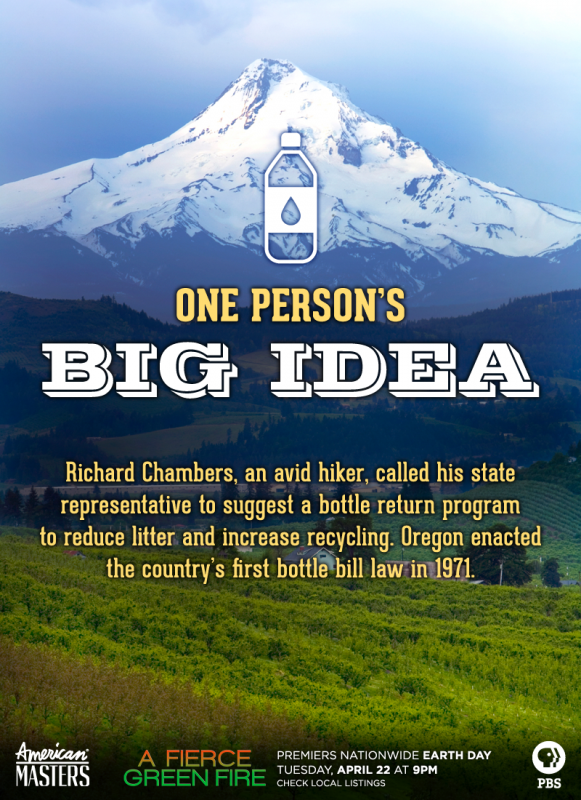
Congress votes down the supersonic transport after environmentalists and fiscal hawks raise a ruckus. The Cross-Florida Canal is stopped using NEPA. Oregon enacts the first bottle bill to encourage recycling and stop litter. Greenpeace begins with pacifists and hippies sailing to the Aleutian Islands to prevent a nuclear bomb test. They are intercepted and forced to turn back, but cause quite a stir and end future tests.
1972
The Clean Water Act, the Marine Mammal Protection Act and the Ocean Dumping Act all become law. Nixon vetoes the Clean Water Act, but Congress overrides his veto. EPA bans DDT. The United Nations Conference on the Human Environment brings together a hundred countries. The U.S. proposes a moratorium on whaling. Indira Gandhi talks back to the West about population control. Activists protest against use of the toxic defoliant Agent Orange. Norwegian philosopher Arne Naess proposes “deep ecology.” The Limits to Growth, a computer model of future environmental trends, is published. The “standard run” leads to overshoot and collapse. But it’s about alternatives; and it proves both controversial and influential.
1973
The Endangered Species Act passes Congress almost unanimously. The Convention on International Trade in Endangered Species of Wild Fauna and Flora, known as CITES, is finalized. The Izaak Walton League sues the U.S. Forest Service to halt clear-cutting. Their victory begins a turning away from “get-out-the-cut” first policies.
The environmental honeymoon comes to an end with the Arab oil boycott. It causes an energy crisis that leads to fuel standards, speed limits, exploration of alternative and renewable energy sources, and more. Construction begins on the last nuclear power plant, Watts Bar in Tennessee, to come on line. And in California, organic farmers form into a group and set the first standards for organic agriculture.
1974
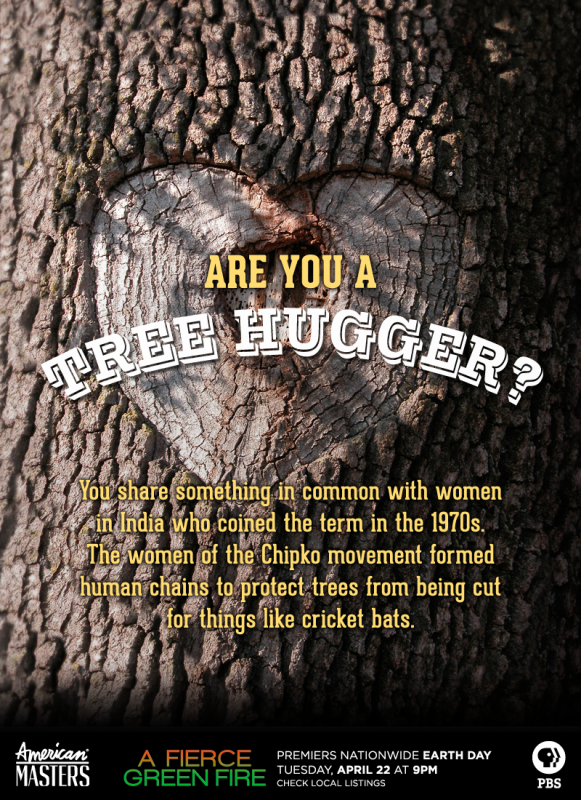 President Ford signs the Safe Drinking Water Act. Sherry Rowland and Mario Molina first describe the way refrigerants (CFCs or chlorofluorocarbons) break up ozone. Chipko, or the tree hugger movement, in India begins when women in the village of Reni surround trees to prevent contractors from cutting them to make cricket bats.
President Ford signs the Safe Drinking Water Act. Sherry Rowland and Mario Molina first describe the way refrigerants (CFCs or chlorofluorocarbons) break up ozone. Chipko, or the tree hugger movement, in India begins when women in the village of Reni surround trees to prevent contractors from cutting them to make cricket bats.
1975
The Eastern Wilderness Act is signed into law after a campaign lasting several years. It protects 207,000 acres, recovering forests acquired by the federal government after extensive logging. In Wyhl, West Germany, protestors occupy the site of a proposed nuclear power plant until it is canceled — the first victory for an anti-nuclear movement building in Europe.
Greenpeace sets off to hunt the whalers. After two months at sea, off the coast of California, they come upon the Russian whaling fleet. They launch their Zodiacs, get between the whalers and the whales, and film harpoons shooting over their heads. The story explodes and launches Greenpeace on the wildest ride of any group.
1976
The National Forest Management Act gives the public new tools to protect national forests from rampant logging. The Federal Land Policy and Management Act guides BLM land use, establishing wilderness areas, and ending land claims under the 1862 Homestead Act. Foreign Affairs publishes an essay by Amory Lovins entitled Energy Strategy, The Road Not Taken? It describes a “hard path” relying on fossil fuels and nuclear fission, and a “soft path” that depends on conservation and renewable energy sources such as wind and solar power.
Greenpeace launches a campaign to save baby harp seals. It’s Paul Watson’s idea. They get out on the ice off Newfoundland and block the sealers’ ship, Arctic Endeavor. However, after meeting fierce resistance, Greenpeace leader Bob Hunter agrees not to spray dye on the pelts to render them worthless. Paul Watson is angry. Still, the baby harp seal campaign is a great success and brings Greenpeace many adherents in Europe.
1977
Over 2,000 Clamshell Alliance protestors occupy the construction site of a nuclear reactor at Seabrook, New Hampshire; 1,414 are arrested and detained. Only one of two reactors planned ultimately comes on line; and the owner is bankrupted by the project. The Abalone Alliance also begins protests against Diablo Canyon in California. The Green Belt Movement is founded by Wangari Maathai in Kenya. Facing forest loss, soil erosion and desertification, she organizes women to plant seedlings and pays them to make sure they grow into trees — over 50 million so far.
Greenpeace returns to the harp seal rookeries. Paul Watson throws a sealer’s club in the water, then chains himself to a pile of pelts. He’s slammed against the ship, then dunked. Mounties demand he be brought on board the sealers’ ship. The crew tries to asphyxiate him with seal blubber, then kick and spit as he’s dragged across the deck. After the second seal campaign, Paul Watson is voted out of Greenpeace. At issue is breaking the ban on violence. But behind it is a power struggle. Within months Paul forms Sea Shepherd Society.
1978
The Smithsonian Institution lists close to 10 percent of 22,000 plant species native to the continental U.S. as threatened or endangered, largely because of habitat loss. In June the Supreme Court upholds the Endangered Species Act in a case involving the snail darter, a tiny fish threatened by the Tellico Dam on the Little Tennessee River. Trying to overturn the ruling, Congress creates a “God Squad” to judge what species are worth saving. However it votes in favor of the snail darter. Congress then exempts the project and the dam is built. But the Endangered Species Act withstands its first test. Sherry Rowland lobbies against CFC’s and the EPA bans their use as propellants in aerosol cans. Amoco Cadiz wrecks off the coast of France, spilling oil over 110 miles of coastline.
After a wet spring Love Canal begins bubbling up. Articles by Michael Brown expose 20,000 tons of toxic chemicals buried in an old canal by Hooker Chemical Company (they sold it to Niagara Falls, N.Y. school district for $1; now the 99th St. Elementary School is built atop it.) Lois Gibbs, whose son, Michael, is starting kindergarten and coming home sick, leads a neighborhood protest. They go to Albany to see the governor and get diverted into a press conference where the NY State Health Commissioner declares an emergency evacuation of the nearest houses. But the neighbors around them get nothing. They organize into the Love Canal Homeowners Association.
Paul Watson gets a ship with funding from Cleveland Amory of the Fund for Animals. Sea Shepherd goes after pirate whalers in the Atlantic, starting with the notorious Sierra. On July 16 Paul catches and rams it twice. As the Sierra limps back into port, Watson surrenders to the Portuguese Navy. The port captain rules there will be no charges. In November, Watson returns to discover the Sierra being repaired, his Sea Shepherd confiscated and about to be handed over to the owners of the Sierra. So on New Year’s Eve, he scuttles his own ship. Then they sink the Sierra once and for all.
Greenpeace begins its next big campaign, against ocean dumping. They discover the GEM dumping radioactive waste and run their Zodiacs under the barrels until one is smashed. Confrontations over dumping at sea go on for years. In 1983, the London Dumping Convention finally calls for a moratorium on dumping waste.
1979
In March Three Mile Island nuclear power plant near Harrisburg, Pennsylvania, suffers a partial meltdown. The accident is a major setback that brings a de facto end to building new nuclear power plants in the U.S. EPA bans production of polychlorinated biphenyls, a toxic class of persistent organic pollutants. Facing a spike in oil prices precipitated by the Iranian Revolution and a broader “crisis of confidence,” President Carter addresses the nation in July, urging conservation. He lowers federal thermostats, and installs solar panels on the White House roof (President Reagan has the panels removed). Inspired by Edward Abbey’s novel The Monkey Wrench Gang (1975), Earth First! is founded by four staffers from national environmental organizations who have grown disillusioned. Its motto: “No Compromise in Defense of Mother Earth.” In the Amazon, Tom Lovejoy initiates the Minimum Critical Size of Ecosystems project, the first large-scale experiment in habitat fragmentation; it confirms biodiversity decline and loss.
Love Canal protests enter a second year focused on health studies. The residents conduct their own study and find that 56 percent of their children “were born with birth defects: three ears, double rows of teeth, extra fingers or toes, or mentally retarded…Of 22 pregnancies only 4 normal babies were born.” NY State Health officials reject their study and do their own. In August, they announce their findings at Love Canal. They got the same results, but ascribe them to “a random clustering of genetically defective people.”
1980
 In June, the Supreme Court rules that a genetically modified organism may be patented, in a case involving a bacterium to help clean up oil spills. After a campaign led by the Sierra Club, the Alaska National Interest Lands Conservation Act passes, protecting over 100 million acres — “the last chance to get it right the first time.”
In June, the Supreme Court rules that a genetically modified organism may be patented, in a case involving a bacterium to help clean up oil spills. After a campaign led by the Sierra Club, the Alaska National Interest Lands Conservation Act passes, protecting over 100 million acres — “the last chance to get it right the first time.”
Love Canal comes to a climax when the EPA is called in and they find genetic damage. The White House overrules a recommendation to relocate the residents. On May 16, Lois Gibbs and her neighbors take EPA officials hostage and give President Carter an ultimatum. Two days later he agrees to relocation. Congress passes Superfund in the wake of Love Canal; it identifies hazardous waste sites across the country, determines parties responsible for cleanup, and provides funds for federal remediation where the original polluters are bankrupt or unidentifiable. It is underfunded most of its life.
Sea Shepherd clears the Atlantic Ocean of pirate whalers in one year. Ibsa1 & Ibsa2 are sunk in Vigo, Spain. Posters offering a $25,000 reward for sinking the Astrid appear in Las Palmas, Canary Islands; unable to trust their own crew, owners retire the vessel. In September, the South African navy sinks the Susan and the Theresa after seizing them from the owners of the Sierra. All illegal whaling in the Atlantic ceases.
1981
James Watt becomes Secretary of the Interior after leading the Mountain States Legal Foundation, which represents miners, ranchers, timber and other extractive industries. A petition calling for his ouster is signed by more than a million people. He resigns in 1983. Ann Gorsuch is appointed to head EPA. But after 22 months of downsizing and refusing to enforce regulations, she too is forced out. Her deputy Rita Lavelle is hauled up on Capitol Hill, lies about spying and is convicted of contempt of Congress. A wind boom begins in California. 17,000 turbines are built, thanks to federal and state credits. But then bad policy kills the U.S. wind power industry, which is overtaken by the Danes.
Lois Gibbs takes her Love Canal relocation money and moves to Washington, D.C., to form an organization “to help all the other Loises.” Called CCHW and then CHEJ (Center for Health, Environment and Justice), Lois becomes the nexus of grassroots groups fighting pollution and poisons. Her motto is, “Plug up all the toilets.” They stop all new toxic waste dumps, then turn to front-of-the-pipe and health issues.
1982
The International Whaling Commission approves a moratorium on commercial whaling to take effect in 1985, thanks to a 10-year campaign carried out by activists throughout the world. Japan and Norway defy the ban and continue whaling. Solar One, built in the Mojave Desert, demonstrates the feasibility of solar thermal energy. In Warren County, North Carolina, the term “environmental racism” is first used during a battle over a toxic waste dump forced on a poor, black community. For six weeks local citizens and their supporters march and are arrested, igniting environmental justice as a movement.
1983
After a year of harassing James Watt and pulling up survey stakes, Earth First! engages in confrontation for the first time in the Kalmiopsis wilderness of Southern Oregon. They are called in by an anonymous forest service employee to protest plans to log a stand of old-growth trees. Earth First! activists block bulldozers on Bald Mountain long enough to get a court order stopping the plan. Later the U.S. Forest Service cancels the timber sale, and the area is incorporated into the South Kalmiopsis Wilderness. Paul Watson returns to campaigning for baby harp seals; the Sea Shepherd escorts three sealing ships out of the Gulf of St. Lawrence rookery. Canadian Coast Guard assault and board the ship. Paul is arrested, tried and sentenced to 21 months in prison. Nine days into serving time, however, an appeals court reverses his conviction. But he doesn’t get his ship back until 1985. The German Green Party wins 27 seats in the Bundestag, a first.
1984
An accident at a Union Carbide pesticide factory in Bhopal, India, releases MIC, methyl isocyanate, killing an estimated 7,000 people within a few days and ultimately causing 15,000 more deaths. Union Carbide denies responsibility; its CEO, later arrested on manslaughter charges, leaves India on bail and is not extradited.
1985
Joe Farman of the British Antarctic Survey reports in the May issue of Nature that a hole in the ozone layer has opened over Antarctica. (They missed it the year before because their readings were dismissed as errors.) Depletion of the ozone layer is occurring more rapidly than expected. As the IWC whaling moratorium takes effect Paul Watson sinks half of Iceland’s whaling fleet. In Auckland, New Zealand, Greenpeace’s ship Rainbow Warrior is blown up on its way to protest against French nuclear bomb tests. It turns out that French intelligence agents did it. Support for Greenpeace soars. The Rainforest Action Network begins by boycotting Burger King until it stops importing beef from the Amazon. In Institute, West Virginia, a plume of MIC gas escapes from Union Carbide’s factory — a twin to Bhopal — and sickens the town.
1986
On April 26, Chernobyl nuclear power plant in the Ukraine explodes, releasing a radioactive cloud over northern Europe — the worst nuclear disaster ever. Next a fire at Sandoz’s chemical factory in Switzerland spews a poisonous pulse down the Rhine. EPA, FDA and USDA establish the Coordinated Framework for Regulation of Biotechnology to regulate newly developed transgenic organisms.
1987
The Montreal Protocol on Substances that Deplete the Ozone Layer is adopted by more than 100 countries. It calls for a reduction in the emission of ozone-depleting chemicals by 2000, but is amended in 1990 and 1992 to call for a complete phase-out of the use of chlorofluorocarbons, halons, and carbon tetrachloride by 2000. Timber harvesting in U.S. national forests peaks at 12.7 billion board feet — only 5 percent of native unlogged forests remain in the lower 48 states.
1988
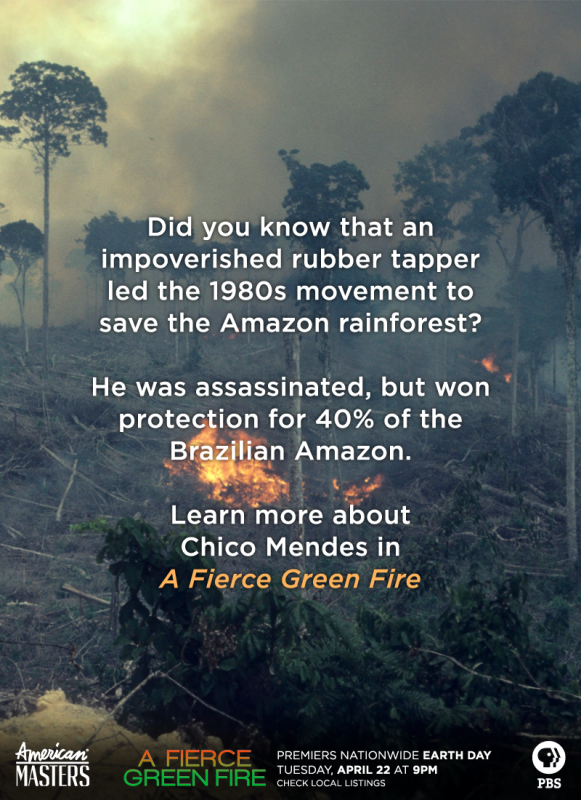 During a heat wave in what turns out to be the hottest year on record in the continental U.S., NASA climatologist Dr. James Hansen testifies that, “The greenhouse effect has been detected and it is changing our climate now.” The Intergovernmental Panel on Climate Change is established to investigate whether carbon dioxide and other gases are causing a warming of the global atmosphere and whether human activity is a major contributor.
During a heat wave in what turns out to be the hottest year on record in the continental U.S., NASA climatologist Dr. James Hansen testifies that, “The greenhouse effect has been detected and it is changing our climate now.” The Intergovernmental Panel on Climate Change is established to investigate whether carbon dioxide and other gases are causing a warming of the global atmosphere and whether human activity is a major contributor.
Chico Mendes, union organizer and leader of the rubber tappers in the western Amazon state of Acre, is assassinated a few days before Christmas. Chico has just established the first rubber tapper reserve — and his death proves to be a turning point in saving the Amazon. 58 million acres are set aside in extractive reserves and 40 percent of the Brazilian Amazon is formally protected.
1989
Exxon Valdez runs aground in Alaska’s Prince William Sound, spilling 11 million gallons of oil over 6,000 square miles and killing hundreds of thousands of marine animals. Alar, an agricultural chemical used on apples, is withdrawn following a study by the Natural Resources Defense Council. In October, international trade in elephant ivory is banned. The Center for Biological Diversity is founded by former Earth Firsters, one of the new grassroots biodiversity protection groups that use litigation to compel implementation of environmental laws to protect wildlife and wild places.
1990
The northern spotted owl is listed as a threatened subspecies under the Endangered Species Act, following litigation brought by environmental groups. Sulfur dioxide emissions from U.S. coal plants reach 28 million tons, double pre-WWII levels. The Clean Air Act Amendments of 1990 strengthen rules to reduce “acid rain” — and introduce trade-able pollution permits for sulfur dioxide emissions. The first cap-and-trade scheme heralds the third wave of environmentalism, based on compromise and cooperation with business. Earth First! activist Judi Bari is bombed — the bomb is planted under her car seat — while recruiting for Redwood Summer. In a Gallup poll, 70 percent of Americans call themselves “environmentalists.”
1991
Judge Dwyer issues an injunction against new logging of northern spotted owl habitat in national forests in the Pacific Northwest. It is the pivotal moment in a decades-long fight to turn the U.S. Forest Service from “getting out the cut” to environmental values. The first National People of Color Environmental Leadership Summit is held in Washington, D.C., attracting more than a thousand participants. The war in Kuwait is an environmental disaster, with big oil spills and fires. An Antarctica treaty takes force. Japan vows to end driftnet fishing.
1992
The U.N. sponsors an Earth Summit in Rio de Janeiro that brings all the world leaders together for a moment of promise. Two major treaties are negotiated: the Convention on Biological Diversity, which the U.S. refuses to sign; and the Framework Convention on Climate Change, which the U.S. threatens not to sign unless reductions in emissions of greenhouse gases are purely voluntary. President Bush declares, “The American way of life is not up for negotiation,” but signs the UNFCCC. It becomes the basis for all future negotiations on climate change. At the end of 1992, Canada, Mexico, and the U.S. sign the North America Free Trade Agreement, easing trade restrictions among the three countries. The proposed treaty causes a rift within the environmental movement, with some groups supportive and others claiming it will undermine environmental laws. A driftnet fishing ban takes effect, as do rules on farmworker exposure to pesticides.
1993
On January 4, 300,000 Ogoni people protest the destruction of their Niger River delta homeland by Shell Oil, which leaks more than an Exxon Valdez every year. Thousands are killed and journalist/environmentalist Ken Saro-Wiwa is arrested. In April, President Clinton hosts a “Forest Summit” to try to solve the timber conflict. His team comes up with a compromise called Option 9. The Clinton administration uses strong-arm tactics to get environmentalists not only to accept it, but to release millions of board feet of timber sales as a good-faith gesture. By 1994, the Northwest Forest Plan leads to an end to the moratorium on logging in northern spotted owl habitat. Simultaneously, the Center for Biological Diversity files suit to protect the Mexican spotted owl, which results in an injunction on logging in national forests across the Southwest.
1994
The FDA allows the sale of the rot-resistant Flavr SavrTM tomato, the first genetically modified whole food intended for public consumption; after a variety of production problems, it is withdrawn from the market within a few years. Genetically modified canola, corn, and soybeans are subsequently approved by the FDA and begin to be widely adopted by U.S. farmers. In June, Exxon Mobil is ordered to pay $5 billion in damages in the wake of the Exxon Valdez disaster; the company immediately appeals.
1995
The National Park Service begins a controversial plan to reintroduce the gray wolf into Yellowstone National Park. Fourteen wolves from Canada are released. Ken Saro-Wiwa is wrongfully executed by Nigerian authorities with the complicity and support of Shell Oil. Next, Greenpeace activists occupy a Shell Oil drilling platform called the Brent Spar in the North Sea; it was to be scuttled but is brought ashore after a consumer boycott gives Shell Oil a second black eye in one year. EPA identifies 126 types of ecosystems that are threatened or critically endangered.
1996
Like Teddy Roosevelt used the Antiquities Act to save the Grand Canyon in 1908, President Clinton uses the same law to create Grand Staircase-Escalante National Monument, an area north of the Grand Canyon threatened with mining. In California, the Headwaters Forest fight — pitting grassroots activists against corporate raiders liquidating the last old-growth redwoods in private hands — culminates in acquisition of the largest old-growth grove. Before the deal is sealed, Judi Bari dies of cancer; Julia Butterfly Hill tree-sits for two years; and David “Gypsy” Chain is killed by a tree felled on him by loggers from Pacific Lumber.
1997
The Kyoto Protocol on greenhouse gases is agreed to in December and signed by the U.S., although President Clinton declines to submit it to the Senate in the wake of the Byrd-Hagel resolution, passed by a vote of 95–0, which opposes key provisions of the agreement. Concerned over environmental justice, the Nuclear Regulatory Commission seeks “further study” before licensing a uranium-enrichment facility at Homer, Louisiana, blocking the facility. The National Cancer Institute reports on radiation exposures from Cold War atmospheric nuclear testing in Nevada; an estimated 120,000 excess thyroid cancers and 6,000 deaths may have been caused by these tests.
1998
It is the hottest year on record — again (to be superseded in 2005 and 2010).
1999
In November, tens of thousands of loosely affiliated anti-globalization protestors—including a variety of environmental, labor, religious, student and anarchist groups—stage demonstrations in Seattle and disrupt the third ministerial meeting of the World Trade Organization. 1999 is the pivotal year for Narmada Bachao Andolan (Save the Narmada Movement) trying to halt a dam in India, marked by protests and satyagraha led by Medha Patkar as lands behind the dam are submerged.
2000
The population of the U.S. exceeds 281 million. Seventy-five percent of Americans live in and around cities, up from 20 percent at the time of the Civil War. Toyota introduces a hybrid gasoline-electric auto, the Prius, which becomes a bestseller. In Kentucky, a Massey Energy dam collapses and 300 million gallons of coal slurry explode out of a mountainside. Clinton’s last act as president is declaring 58 million acres of national forests off limits to logging. The “roadless rule” survives several court challenges. Rainforest logging is banned in New Zealand after a 30-year campaign.
2001
President Bush rejects the Kyoto Protocol as “fatally flawed in fundamental ways.” After secret meetings with industry leaders, Vice President Cheney announces a National Energy Policy emphasizing oil exploration and new coal and nuclear power plants. Rodolfo Montiel and Teodoro Cabrera, who fight to save tropical rainforests in the Sierra Madre of Mexico, are convicted of arms and drug smuggling despite evidence of torture. President Fox frees them after their attorney is murdered. Satellite photos reveal that a third of Guerrero’s forests are gone and Mexico is losing three million acres per year. University of California ecologist Ignacio Chapela presents evidence that genetically modified corn has contaminated wild varieties in the Mexican state of Oaxaca. A NASA survey of 2,000 glaciers finds that most are shrinking. In China, relocation of one million people to make way for the Three Gorges Dam leads to protest and police violence.
2002
The USDA creates the National Organic Program, regulating organic food production. The German government announces plans for a massive increase in wind generation capacity over the next 25 years. The U.S. wind energy industry wins passage of an extended production tax credit for electricity generated by wind power. A jury in Anniston, Alabama, rules that Monsanto polluted the town with tons of toxic PCB.
2003
The Bush administration wins a court victory on mountaintop removal mining that allows “spoils” to be dumped into streams. Next Bush proposes “Clear Skies” legislation to weaken targets for pollutants from power plants. Senator Inhofe passes an amendment rolling back New Source Review. However 12 eastern states win a court injunction blocking Bush from weakening clean air laws. Europe is hit by the hottest summer in 500 years; the death toll is 70,000. The GloFish®, a genetically modified zebra fish, is the first transgenic organism sold as a pet.
2004
Russia ratifies the Kyoto Protocol, putting it into effect without U.S. approval. Wangari Maathai wins the Nobel Prize. The National Wetlands Inventory reports that, since 1998, the U.S. has seen a small net gain in wetlands acreage: restoration programs and land set-asides have balanced ongoing losses from development.
2005
Hurricane Katrina devastates New Orleans and the Gulf Coast in August, heightening anxieties about global warming, a possible intensifier of the region’s weather patterns. The governors of seven northeastern states agree to a cap-and-trade program to limit carbon dioxide emissions, the Regional Greenhouse Gas Initiative. The Energy Policy Act of 2005 exempts fracking (hydraulic fracturing) from EPA regulation — infamous as the “Halliburton loophole.” By 2010 anti-fracking movements arise, aimed at saving the Delaware River basin; and Gasland by Josh Fox premieres at Sundance.
2006
The documentary film An Inconvenient Truth, featuring Al Gore giving a Powerpoint on the dangers of global warming, plays a transformative role in bringing back the issue of climate change. The state of California passes the Global Warming Solutions Act, mandating a reduction in greenhouse gases to 1990 levels by the year 2020. Scientists discover losses among commercial honey-bee colonies; named “Colony Collapse Disorder,” the phenomenon becomes a subject of ongoing concern. President Bush establishes the Northwestern Hawaiian Islands Marine National Monument, an ocean reserve of 140,000 square miles. The Great Bear Forest is established on the coast of British Columbia: 5 million acres saved from logging. Greenland glaciers are melting twice as fast as estimated.
2007
After years of recovery, the bald eagle is removed from the list of threatened species. Melting across the Arctic takes off at a gallop; in September, satellite imagery reveals that the Northwest Passage is free of ice and fully navigable. In Massachusetts v. Environmental Protection Agency, the Supreme Court rules that the 1990 Clean Air Act gives EPA regulatory authority over automobile greenhouse gas emissions, an authority EPA avoided claiming. Bill McKibben and six students from Middlebury College form Step It Up and organize 2,000 rallies across the country. In 2008, they become 350.org.
Also launching in 2007 is Avaaz, an online activist network that grows to 20 million members in 194 countries. The first new nuclear power plants in 30 years are proposed in Texas, but their owner abandons the permit process in 2011. China overtakes the U.S. as the world’s leading emitter of greenhouse gases — though Americans are responsible for over six times as much greenhouse gas per capita.
2008
The polar bear is listed as a threatened species. The Center for Biological Diversity pioneers use of the Endangered Species Act to address global warming. It has a 90 percent success rate, has protected 335 species and 43 million acres of critical habitat, proving, “You don’t have to be moderate to be effective.” Scandal rocks the U.S. DOI’s Minerals and Management Service: gifts, sex and drugs in exchange for oil leases. Marina Silva, rubber tapper and now Brazil’s environment minister, resigns to protest failure to protect the Amazon rainforest. She will run for president in 2010 and poll 20 percent of the vote. GCCA, the Global Call for Climate Action, is formed by 270 NGOs; their first campaign is Tck, Tck, Tck, aimed at a climate deal in Copenhagen. In Antarctica, the Wilkins Ice Shelf collapses. Cyclone Nargis kills at least 138,000 in Burma. Another coal disaster ends the year: one billion gallons of coal fly ash sludge spill out of a TVA dam.
2009
In President Obama’s first year, auto mileage standards are raised 10 mpg to 35.5 mpg; EPA rules six greenhouse gases are a danger to the public and should be regulated; and the largest wilderness bill in 15 years sets aside 2 million acres. The G-8 industrial nations agree to cut greenhouse gas emissions 80 percent by 2050, a prelude to COP15. But in Copenhagen, climate negotiations collapse. The U.S. offers to cut emissions less than expected and China seizes on the resulting gridlock as an opportunity to walk out. President Obama tries to save the day with an “accord.” But it is a pledge exercise, not a binding treaty — and it becomes meaningless when climate legislation dies in the U.S. Congress.
2010
On March 31, President Obama proposes an Offshore Drilling Plan which will open vast expanses along the Atlantic Ocean, Gulf of Mexico and north coast of Alaska. Less than three weeks later, disaster strikes: BP’s Macondo oil well, being drilled by the Deepwater Horizon, explodes. Over 200 million gallons of crude oil leak out in the next five months, devastating coastlines from Louisiana to Florida. Moscow, surrounded by 800 wildfires, uses them as an excuse to cut down the Khimki Forest, which Yevgenia Chirikova and Ecodefense have been fighting to save from a highway. At Massey Energy’s Upper Big Branch Mine, a methane explosion kills 29 miners. The Cape Wind project is approved. Proposition 23, aimed at halting California’s climate legislation, is defeated. Australia sues Japan over whaling in the Southern Ocean Sanctuary.
2011
In Japan, following an earthquake and tsunami, the Fukushima nuclear power complex suffers reactor meltdown, explosions and fires ignited by fuel rods. Germany decides to phase out nuclear power. Nations and states set renewable energy goals: 30 percent by 2020 for California; 20 percent by 2020 in Europe. Tar Sands Action — joined by NRDC, Sierra Club, 350.org, National Wildlife Federation, Friends of the Earth, Greenpeace and Rainforest Action Network — begin protesting against the Keystone XL pipeline. In August, old lions like James Hansen and Gus Speth get arrested outside the White House. In November, protestors surround the White House. Obama rejects Keystone’s application in January. Arctic sea ice reaches a historic low and Hurricane Irene drenches the U.S. east coast.
2012
EPA issues the first limits on greenhouse gas emissions from newly built power plants. NASA reports that the Greenland Ice Sheet melt is the most rapid since observations began 30 years ago. 2012 is the warmest year on record, by far, in the U.S. Hurricane Sandy hits New York with a 40-foot surge and becomes the second-most destructive hurricane in history.
2013
350.org and the Sierra Club launch the year with the biggest climate action rally yet. Carbon trading begins in California. Nuclear power plants begin to close around the U.S.: Crystal River in Florida, declared “inoperable”; San Onofre, due to “expensive repair bills”; Kewaunee in Wisconsin; and Zion near Chicago. Electric utilities using coal go bankrupt, undercut by fracked natural gas. EPA finally moves to issue regulations on greenhouse gas emissions from existing power plants. Beijing struggles through months of toxic smog in the winter of 2012-2013. Tornadoes in the U.S. set a new record: 811. No hurricanes hit the U.S., but the Philippines are devastated by Typhoon Haiyan. Meanwhile, North Carolina outlaws sea level rise. An oil train explosion wipes out Lac Mégantic, Quebec. Two more derailments occur in early 2014. Northwestern opposition to coal trains stops three planned terminals, with three more to go. Last we heard, the Enbridge pipeline to carry tar sands oil west through Canada was stalled…and the Keystone XL battle goes on.
—-
Did you learn anything that surprised you? Let us know in the comments, below. Learn more when American Masters: A Fierce Green Fire premieres on PBS on Earth Day, April 22, 2014 at 9 pm. (Check local listings).


